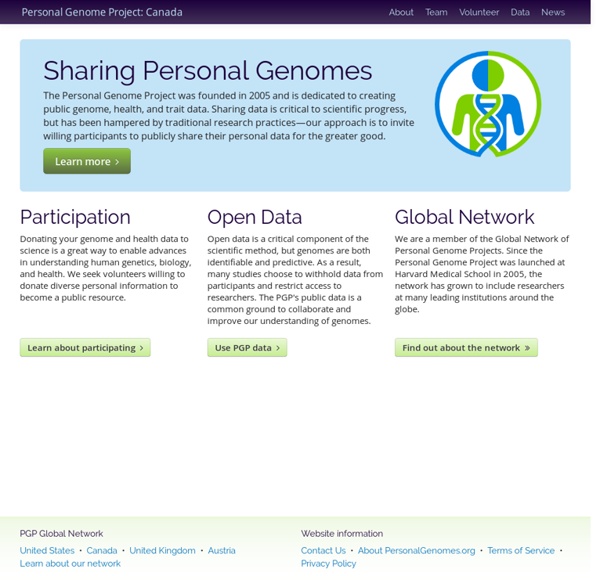



ENCODE and modENCODE Projects The ENCODE Project: ENCyclopedia Of DNA Elements Follow the ENCODE Project on: ENCODE Overview The National Human Genome Research Institute (NHGRI) launched a public research consortium named ENCODE, the Encyclopedia Of DNA Elements, in September 2003, to carry out a project to identify all functional elements in the human genome sequence. The pilot phase tested and compared existing methods to rigorously analyze a defined portion of the human genome sequence (See: ENCODE Pilot Project). and Genome Research [genome.org]. With the success of the initial phases of the ENCODE Project, NHGRI funded new awards in September 2007 to scale the ENCODE Project to a production phase on the entire genome along with additional pilot-scale studies. Read about the ENCODE Pilot Project. Top of page ENCODE Publications, Features and Press Releases Publications Features Press Releases ENCODE Consortium Membership ENCODE Data Release Policy Accessing ENCODE Data ENCODE Tutorials Go to ENCODE Tutorials!
Physicists Slow Speed of Light Physicists Slow Speed of Light By William J. Cromie Gazette Staff Light, which normally travels the 240,000 miles from the Moon to Earth in less than two seconds, has been slowed to the speed of a minivan in rush-hour traffic -- 38 miles an hour. An entirely new state of matter, first observed four years ago, has made this possible. Such an exotic medium can be engineered to slow a light beam 20 million-fold from 186,282 miles a second to a pokey 38 miles an hour. "In this odd state of matter, light takes on a more human dimension; you can almost touch it," says Lene Hau, a Harvard University physicist. Hau led a team of scientists who did this experiment at the Rowland Institute for Science, a private, nonprofit research facility in Cambridge, Mass., endowed by Edwin Land, the inventor of instant photography. In the future, slowing light could have a number of practical consequences, including the potential to send data, sound, and pictures in less space and with less power.
The Cure for Cancer Is Data—Mountains of Data A few years ago Eric Schadt met a woman who had cancer. It was an aggressive form of colon cancer that had come on quickly and metastasized to her liver. She was a young war widow from Mississippi, the mother of two girls she was raising alone, and she had only the health care that her husband’s death benefits afforded her—an overburdened oncologist at a military hospital, the lowest rung on the health care ladder. The polar opposite of cutting-edge medicine. Schadt had just started the Icahn Institute for Genomics and Multiscale Biology at Mount Sinai Hospital, and when he heard about the woman in Mississippi, he said, simply, “That’s exactly the kind of patient we take.” Schadt isn’t a cancer specialist or even a medical doctor. Seated at his desk at Mount Sinai, Schadt is direct and disarming. “We’re on this exponential growth curve, where your mind naturally projects all the way into the future, and you think: We’re going to figure this out,” he says. —Gregory Barber Alphabet Apple
ENCODE Project at UCSC 12 Sept 2013 - New UDR ENCODE Download Method Available The UCSC Genome Browser is pleased to offer a new download protocol to use when downloading large sets of files from our download servers: UDR (UDT Enabled Rsync). UDR utilizes rsync as the transport mechanism, but sends the data over the UDT protocol, which enables huge amounts of data to be downloaded more efficiently over long distances. 25 July 2013 - BLUEPRINT Epigenome Data Hub and Quick Reference PDF Now Available We are pleased to announce the addition of the BLUEPRINT Epigenomics Data Hub on the UCSC Genome Browser through our Public Hubs function. Also the ENCODE Quick Reference Card is now available in PDF courtesy of OpenHelix on the ENCODE Education and Outreach page. 28 May 2013 - ENCODE portal changes: New Link to NHGRI Tutorials, New External Software Tools Page, Updates to Publications including New 2013 Consortium Papers Section The ENCODE portal was updated to include informative new and expanded pages.
LMM Research | PCPGM The Laboratory for Molecular Medicine (LMM) supports several research studies that are ongoing within the laboratory or in affiliation with other clinical research groups. For more information please click on the research study of interest. Noonan Syndrome/PTPN11 Gene Mutation Studies Investigators: Raju Kucherlapati, Ph.D., Amy Roberts, M.D.Contact: Amy Roberts, M.D. - aeroberts@partners.org or 617-525-5768Institutions: Brigham and Women's Hospital, Massachusetts General Hospital and Children's Hospital Boston This study examines genotype-phenotype correlations for individuals and families (children and adults) with Noonan syndrome and related disorders. Contact Amy Roberts, MD (aeroberts@partners.org, or 617-525-5768) for more information about study enrollment and inclusion criteria. For more information about Noonan syndrome, see Resources. Non-Affiliated Research
OpenOil openSNP A Breath of Fresh Microbubbles John Kheir knows what it's like to lose a race against time with oxygen. In October 2006, the pediatric critical care doctor was treating a 9-month-old girl admitted to Boston Children's Hospital with viral pneumonia. As her disease worsened, her lungs hemorrhaged, filling with blood and blocking her breathing. Kheir jumped into action, shoving a breathing tube down her windpipe to help get air to her lungs, performing CPR, and eventually putting the baby on a machine that took over for her heart and lungs. But in the minutes it took to restore the flow of air into the young girl's body, her brain had already suffered permanent damage because of the lack of oxygen. She died a few days later. Devastated, Kheir began looking for better ways to get oxygen into the body. "This is a potential breakthrough," says cardiac intensive care doctor Peter Laussen of Boston Children's Hospital, who was not involved in the work.